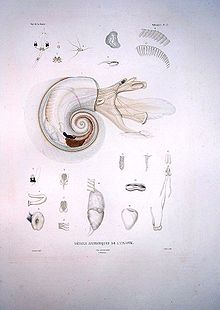
Dolabrifera is a genus of sea hares, a taxonomic group of sea slugs or marine opisthobranch gastropod mollusks belonging to the family Aplysiidae.
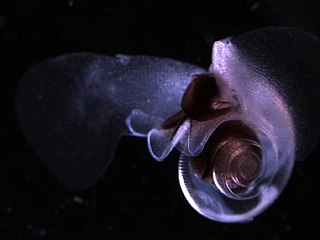
Limacina is a genus of swimming predatory sea snails commonly known as sea butterflies in the family Limacinidae. This genus contains some of the world's most abundant gastropod species.
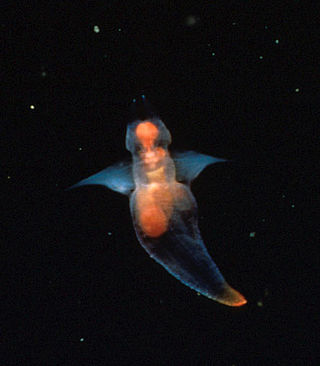
The Clionidae are a family of sea angels, which are a group of pelagic marine gastropods.
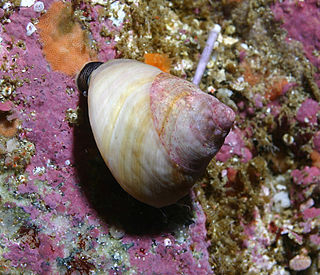
Tegula is a genus of small to medium-sized sea snails, marine gastropod molluscs in the family Tegulidae.

Trimusculus is a genus of medium-sized air-breathing sea snails or false limpets, marine pulmonate gastropod molluscs in the family Trimusculidae.

Hipponicidae, common name hoof shells or hoof snails, is a family of small sea snails, limpet-like marine gastropod molluscs in the superfamily Vanikoroidea.

Lottiidae is a family of sea snails, specifically true limpets, marine gastropod mollusks in the superfamily Lottioidea and the clade Patellogastropoda.
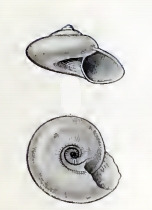
Solariellidae is a family of small sea snails, marine gastropod mollusks in the superfamily Trochoidea.

Liotiidae is a family of small sea snails, marine gastropod mollusks in the clade Vetigastropoda.
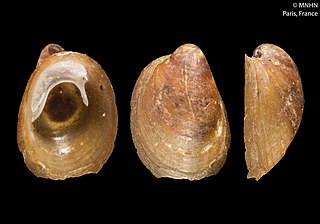
Crepidula, commonly known as the slipper snails, slipper limpets, or slipper shells, is a genus of sea snails, marine gastropod mollusks in the family Calyptraeidae. This family includes the slipper snails (Crepidula), hat snails (Calyptraea), spiny slipper snails (Bostrycapulus), and cup-and-saucer snails (Crucibulum) as well as Crepipatella, Siphopatella, Grandicrepidula, and Maoricrypta.

Cylichnidae, common name the "chalice bubble snails" or "canoe bubble snails" is a family of sea snails or bubble snails, marine gastropod mollusks in the superfamily Cylichnoidea.

Bittium is a genus of very small sea snails, marine gastropod molluscs in the family Cerithiidae, the horn snails.
Heleobia is a genus of small freshwater and brackish water snails with a gill and an operculum, aquatic gastropod mollusks in the family Cochliopidae and the superfamily Truncatelloidea.

Patella is a genus of sea snails with gills, typical true limpets, marine gastropod mollusks in the family Patellidae, the true limpets.
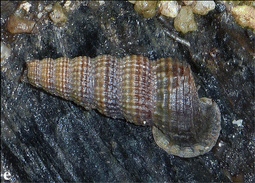
Cerithidea is a genus of medium-sized sea snails or mud snails, marine gastropod mollusks in the family Potamididae, the horn snails.

Pyramidella is a genus of minute to medium-sized sea snails, marine gastropod mollusc in the subfamily Pyramidellinae of the family Pyramidellidae, the pyrams and their allies.

Phidiana is a genus of sea slugs, aeolid nudibranchs, marine gastropod molluscs in the family Facelinidae.
Atlanta californiensis is a species of sea snail, a holoplanktonic marine gastropod mollusk in the family Atlantidae.
Atlanta inclinata is a species of sea snail, a holoplanktonic marine gastropod mollusk in the family Atlantidae.

Atlanta lesueurii is a species of sea snail, a holoplanktonic marine gastropod mollusk in the family Atlantidae.
